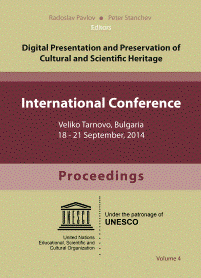Importance and Benefits of OPEN SCIENCE for Ubiquitous Sharing, Dissemination and Impact *
DOI:
https://doi.org/10.55630/dipp.2014.4.41Keywords:
Open Science, Impact, Research Excellence Framework (REF), open notebook science, open data, open access, Responsible Research & InnovationAbstract
While openness is well applied to software development and exploitation (open sources), and successfully applied to new business models (open innovation), fundamental and applied research seems to lag behind. Even after decades of advocacy, in 2011 only 50% of the public-funded research was freely available and accessible (Archambault et al., 2013). The current research workflows, stemming from a pre-internet age, result in loss of opportunity not only for the researchers themselves (cf. extensive literature on topic at Open Access citation project, http://opcit.eprints.org/), but also slows down innovation and application of research results (Houghton & Swan, 2011). Recent studies continue to suggest that lack of awareness among researchers, rather than lack of e-infrastructure and methodology, is a key reason for this loss of opportunity (Graziotin 2014). The session will focus on why Open Science is ideally suited to achieving tenure-relevant researcher impact in a “Publish or Perish” reality. Open Science encapsulates tools and approaches for each step along the research cycle: from Open Notebook Science to Open Data, Open Access, all setting up researchers for capitalising on social media in order to promote and discuss, and establish unexpected collaborations. Incorporating these new approaches into a updated personal research workflow is of strategic beneficial for young researchers, and will prepare them for expected long term funder trends towards greater openness and demand for greater return on investment (ROI) for public funds. * All authors offer equal contribution. 323References
Archambault, E. et al. Proportion of OA Peer-Reviewed Papers at the European & World Levels 2004-2011. (2013). at http://www.sciencemetrix.com/pdf/SM_EC_OA_Availability_2004-2011.pdf
Graziotin 2014. Green open access in computer science – an exploratory study on authorbased self-archiving awareness, practice, and inhibitors DOI: 10.14293/A2199- 1006.01.SOR-COMPSCI.LZQ19.v1
Houghton, J., Swan, A., Brown, S., 2011. Access to research and technical in-formation in Denmark [WWW Document]. URL http://www.deff.dk/uploads/media/Access_to_Research_and_Technical_Information_in_D enmark.pdf




